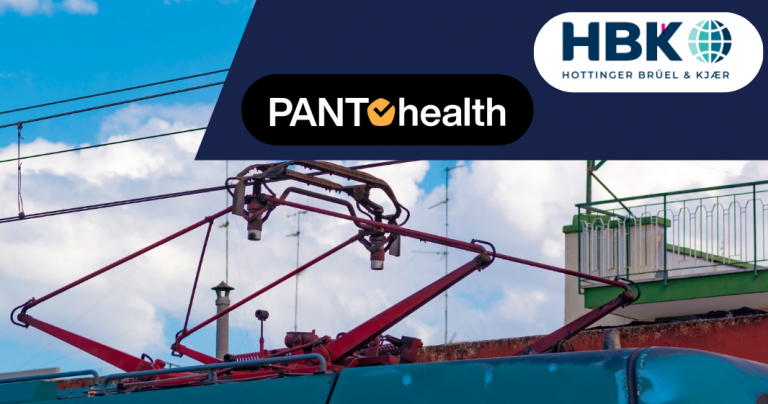Using PANTOhealth’s Advanced Simulation
Pain Point Addressed:
The Need for Precise Pantograph Performance Data
HBK (Hottinger Brüel & Kjaer GmbH), a leading name in measurement instrumentation and testing, has a long history of providing innovative solutions to complex engineering problems. With decades of experience, HBK has built a reputation for precision, reliability, and cutting-edge technology, particularly in industries that demand the highest accuracy and data integrity levels.
In this project, the infrastructure manager sought to enhance the performance of its overhead catenary system, a critical component of its railway infrastructure optimization. The system supplies power to trains via overhead wires and is key to maintaining efficiency and safety.
To continue delivering top-notch service, the infrastructure manager recognized the opportunity to gather more precise data on the pantograph’s performance, especially to understand its behavior under a certain point of the catenary.
Therefore, HBK has been asked to install strain gauges on the contact wire to measure the imposed stress on the contact wire of the overhead catenary system due to each passing pantograph. With this data, the infrastructure manager could evaluate and compare the performance of operating photographs.
This data was essential for ensuring the ongoing reliability and safety of the railway network. By acquiring this information, the infrastructure manager aimed to make informed decisions that would prevent potential downtime and preserve the integrity of its operations.
In this project, one question was still unanswered: which point of the contact wire, among the span, is the best location to install the sensors so that the measured data by the sensor can represent the stress severity of a passing pantograph?
In the following paragraphs, we will explain how PANTOhealth’s advanced simulation system helped HBK’s catenary system monitoring.
Previous Client Approach:
Existing Sensor Placement Strategies and Their Challenges
Before partnering with PANTOhealth, HBK had some initial suggestions for the sensors’ installation points. These suggested locations were installing sensors along the catenary near the droppers.
The dropper is a critical component that supports the overhead wire and ensures consistent tension, which is vital for stable power delivery to the trains.
Established industry practices guided the placement of these sensors. However, HBK saw the potential to enhance the effectiveness of this approach. The data gathered was helpful but could benefit from greater granularity and a more tailored strategy that considered the unique characteristics of the railway network, such as varying operational speeds, environmental conditions, and the physical layout of the catenary system.
Our Solution:
Improving Catenary System Monitoring with Advanced Simulations
Understanding the potential for improvement, PANTOhealth proposed an innovative and customized solution. Rather than relying on a traditional sensor placement approach, PANTOhealth utilized advanced simulation technology to create a strategy specifically designed for HBK’s needs.
The core of this approach was to simulate the entire catenary system monitoring under various operational scenarios, taking into account all relevant factors, such as speed, tension, environmental conditions, and the physical dynamics of the railway network.
Through these simulations, PANTOhealth identified the optimal locations where sensors would provide the most valuable data. This ensured the infrastructure manager could effectively gather the necessary information to monitor and optimize its catenary system.
Additionally, this approach reduced the number of sensors required, resulting in lower costs and simplified maintenance. The simulation provided a transparent, evidence-based blueprint for sensor placement, offering a more accurate and efficient method than before.
Results and Impact:
Optimized Catenary System Monitoring, Reduced Costs, and Improved Railway Efficiency
Implementing PANTOhealth’s solution significantly and positively impacted the project’s outcome. With the optimal placement of sensors as determined by the simulations, HBK collected comprehensive, high-quality data on its catenary system related to the pantograph’s performance. This data empowered the infrastructure manager to make informed decisions that significantly enhanced the reliability and efficiency of its operations.
The careful placement of fewer sensors helped lower costs and reduced the complexity of the monitoring system, making it easier to manage and maintain over time.
The success of this project highlighted the value of PANTOhealth’s analytical approach, providing HBK with a clear competitive advantage in maintaining and optimizing its railway infrastructure.
Follow PANTOhealth on LinkedIn for more updates and news about our projects.
